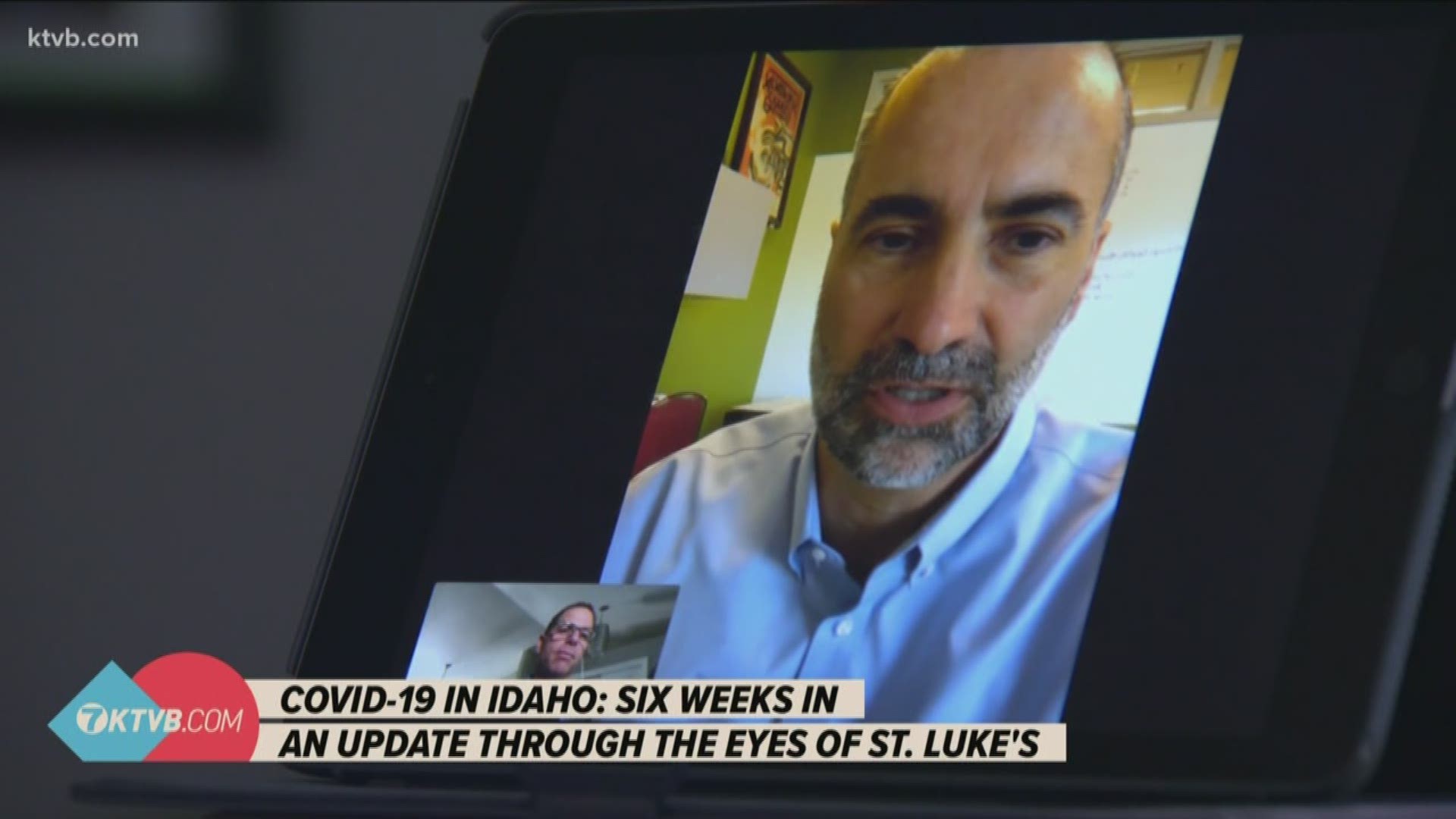BOISE, Idaho — With nine days left in a five-week stay-at-home order, where does Idaho stand medically, in terms of how we have handled this virus crisis.
As of Tuesday, April 21, the state's COVID-19 website reports that we've tested about 17,500 Idahoans for coronavirus. About 10% of those came back positive, but the actual infection rate is likely much higher due to asymptomatic people not getting tested.
Dr. James Souza, a pulmonary disease specialist and chief medical officer for St. Luke's Health Systems, said he believes Idaho isn't doing enough testing for COVID-19.
St. Luke's serves 20 communities from Baker City, Oregon to Burley. One of those communities includes Blaine County, where for a brief moment was one of the hottest spots for coronavirus in the country.
Currently, Souza said they're keeping track of patients, confirmed cases, ICU and ventilator needs, as well as personal protective equipment (PPE) and staffing.
"Inside our health system we are seeing our inpatient numbers go down," Souza said. "Two to three weeks ago we were seeing 90-100 patients on any given day. That's now down in the high 20s and low 30s. We're still diagnosing cases but the rate at which we are diagnosing cases is going down. We are also seeing the number of patients with COVID-19 in an intensive care unit also coming down. Today I think we had 7 or 8 ICU patients across our health system with a COVID-19 diagnosis. Two or three weeks ago where we had 22 or 23."
"The reason we're doing ok now is because of the action that was taken and while it was kind of a blunt instrument, it worked and fortunately it's given us the time to plan and come up with a way to reopen that's going to be armed with intelligence."
Souza says he's heard a lot of misinformation being spread to his patients.
"First of all, relative to patient safety, high dosing on hydroxychloroquine or using a bleach gargle, just a lot of bad info that's not safe," he explained. "I've also heard that this is just like the flu. That's just wrong. This is 50 times more lethal than the flu."
But the biggest misconception? People thinking because the curve is beginning to flatten, things can go back to normal.
"I've heard that the reason we're in good shape here in Idaho is because we didn't have to take the steps that the governor took, that's wrong," Souza said. "We were starting to manage an actual spike in Twin Falls, then there was an outbreak in Blaine County and a majority of those folks went to Twin Falls and over a period of five to seven days, we saw our intensive care basically at capacity."
Souza added that just like any other virus, there isn't a healthcare worker that believes flattening the curve will bring COVID-19 cases down to zero.
Instead, he said it's about monitoring it, responding to flare-ups and tamping them down until a vaccine is created to get that 'herd immunity,' which may mean locking down an area that sees another abundance of cases.
"I think it would be whether acquired naturally because it continues to spread or ideally we are able to control it long enough to get an effective vaccine to artificially create that herd immunity through a vaccination program. In terms of a vaccine, it's not until 2021, which means for the next year, we need to figure out how to live with COVID-19 being in our communities... and we can. It's just a virus, we've got the know-how that we can apply to manage this virus."
Join 'The 208' conversation:
- Text us at (208) 321-5614
- E-mail us at the208@ktvb.com
- Join our The 208 Facebook group: https://www.facebook.com/groups/the208KTVB/
- Follow us on Twitter: @the208KTVB or tweet #the208 and #SoIdaho
- Follow us on Instagram: @the208KTVB
- Bookmark our landing page: /the-208
- And we also turn each episode into a podcast on Spotify or Podbeam
- Still reading this list? We're on YouTube, too:

